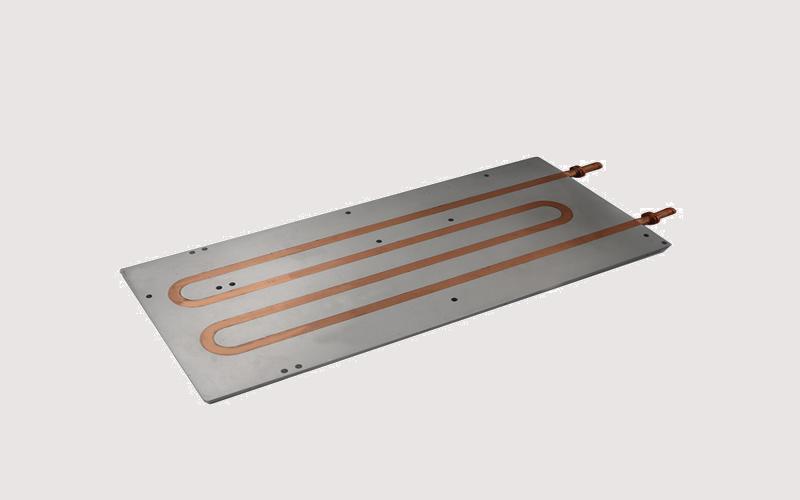The Advantages and Disadvantages of Liquid Cold Plate Heat Sink
Liquid cold plate heat sinks are innovative cooling solutions that have gained popularity in various industries. These heat sinks utilize a liquid coolant, such as water or a specialized fluid, to dissipate heat from electronic components. Let's delve into the advantages and disadvantages of using liquid cold plate heat sinks.
Advantages:
1. Efficient Heat Transfer: Liquid cold plate heat sinks offer excellent heat dissipation capabilities due to their direct contact with the heat source. This direct contact allows for efficient heat transfer, ensuring optimal cooling performance.
2. Uniform Cooling: The design of liquid cold plate heat sinks allows for uniform cooling across the entire heat sink surface. This uniform cooling minimizes temperature gradients and hot spots, ensuring that all components receive consistent cooling.
3. Compact Size: Liquid cold plate heat sinks are typically more compact compared to other cooling solutions, making them suitable for applications with limited space. Their compact size also allows for easy integration into various electronic systems.
4. Noise Reduction: Liquid cold plate heat sinks operate silently since they do not require any fans or moving parts. This makes them ideal for applications where noise reduction is a priority, such as in medical devices or audio equipment.
Disadvantages:
1. Complexity: Implementing a liquid cold plate heat sink system can be more complex compared to traditional air cooling methods. It requires additional components, such as pumps and tubing, which may increase the overall system complexity and cost.
2. Maintenance: Liquid cold plate heat sinks may require periodic maintenance, including coolant refills and system checks. In certain applications, the need for maintenance can be seen as a disadvantage, especially in remote or inaccessible locations.
3. Cost: Liquid cold plate heat sinks can be more expensive upfront compared to air cooling solutions. The additional components, such as pumps and tubing, contribute to the overall cost. However, it's important to consider the long-term benefits and improved performance that liquid cooling can provide.
Exploring the Benefits and Drawbacks of Liquid Cooling Loops
Liquid cooling loops, also known as closed-loop liquid cooling systems, are another effective method for dissipating heat from electronic components. Let's examine the benefits and drawbacks of utilizing liquid cooling loops.
Benefits:
1. Superior Cooling Efficiency: Liquid cooling loops offer superior cooling efficiency compared to traditional air cooling methods. The use of liquid coolant enables rapid heat transfer, resulting in lower component temperatures and improved system performance.
2. Flexibility: Liquid cooling loops provide greater flexibility in terms of system design and customization. They can be tailored to specific cooling requirements, allowing for efficient cooling of high-power components or overclocked systems.
3. Quiet Operation: Similar to liquid cold plate heat sinks, liquid cooling loops operate silently. By eliminating the need for loud fans, they contribute to a quieter working environment, making them suitable for noise-sensitive applications.
Drawbacks:
1. Complexity: Implementing and maintaining a liquid cooling loop can be more complex compared to air cooling solutions. It involves additional components, such as a pump, radiator, and tubing, which require careful installation and regular maintenance.
2. Risk of Leaks: Liquid cooling loops, if not properly installed or maintained, can pose a risk of leaks. This can potentially damage electronic components and lead to system failures. However, with proper installation and maintenance, the risk of leaks can be minimized.
3. Cost: Liquid cooling loops are generally more expensive compared to air cooling solutions due to the additional components and complexity involved. However, the enhanced cooling performance and potential for overclocking make liquid cooling loops a worthwhile investment for enthusiasts and high-performance systems.
Conclusion
When considering cooling solutions for electronic components, both liquid cold plate heat sinks and liquid cooling loops offer distinct advantages and disadvantages. Liquid cold plate heat sinks excel in efficient heat transfer and uniform cooling, with a more compact size and noise reduction capabilities. On the other hand, liquid cooling loops provide superior cooling efficiency, flexibility, and quiet operation, albeit with increased complexity and cost.
Ultimately, the choice between liquid cold plate heat sinks and liquid cooling loops depends on factors such as the specific application, cooling requirements, available space, and budget. It is essential to carefully evaluate these factors and consult with experts in the field to determine the most suitable cooling solution for your needs.

